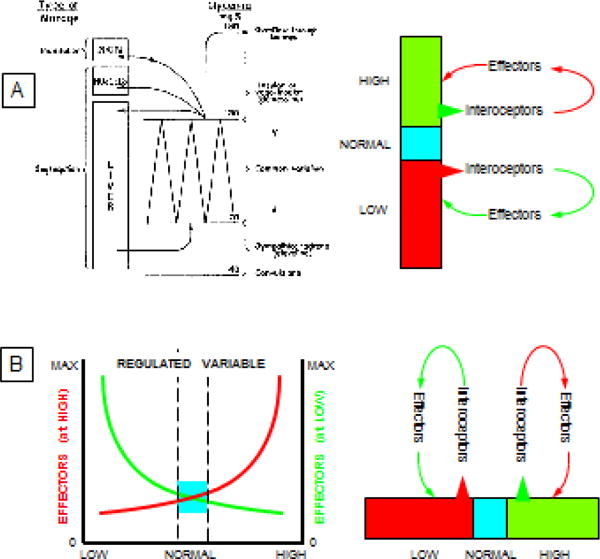Figure 1. (A) Cannon’s concept diagram for homeostasis of blood glucose, and (B) concept diagram depicting homeostasis of a regulated variable by two complementary effectors.

Cannon’s diagrammed how what he called the “sympathico-adrenal” and complementary “vago-insular” systems maintain homeostasis of blood sugar. Increases in blood glucose stimulate pancreatic islet cells to release insulin, which facilitates glucose uptake by organs such as the liver. Decreases in blood glucose reflexively stimulate adrenomedullary cells to release adrenaline, which augments glucose formation from liver glycogen and evokes glucose release into the bloodstream. The double-y graph at the bottom left is a more generalized depiction of Cannon’s schema. Increases in the level of the regulated variable beyond a certain limit (green) evoke effects at multiple levels of the neuraxis that tend to return the level of the regulated variable to within bounds, and decreases in the level of regulated variable (red) evoke effects that also tend to return the level of the regulated variable to within bounds. One effector (e.g., insulin) responds to an increase and one (e.g., the sympathetic adrenergic system) to a decrease in the level of the regulated variable (e.g., serum glucose). The level of the regulated variable is kept within bounds by the input-output relationship, without a homeostatic comparator (e.g., a “glucostat”). Cannon’s diagram is reproduced with permission from the American Physiological Society.
